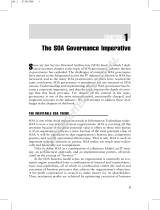Texas Instruments AN-898 Audio Amplifiers Utilizing: SPiKe Protection (Rev. B) Application notes
- Category
- Car audio amplifiers
- Type
- Application notes
Texas Instruments AN-898 Audio Amplifiers Utilizing: SPiKe Protection (Rev. B) is a highly advanced and versatile audio amplifier that provides exceptional sound quality and unmatched protection features. With its innovative SPiKe protection circuitry, this amplifier safeguards itself against a wide range of potential hazards, including overvoltages, undervoltages, short circuits, and thermal runaway.
Texas Instruments AN-898 Audio Amplifiers Utilizing: SPiKe Protection (Rev. B) is a highly advanced and versatile audio amplifier that provides exceptional sound quality and unmatched protection features. With its innovative SPiKe protection circuitry, this amplifier safeguards itself against a wide range of potential hazards, including overvoltages, undervoltages, short circuits, and thermal runaway.



















-
 1
1
-
 2
2
-
 3
3
-
 4
4
-
 5
5
-
 6
6
-
 7
7
-
 8
8
-
 9
9
-
 10
10
-
 11
11
-
 12
12
-
 13
13
-
 14
14
-
 15
15
-
 16
16
-
 17
17
-
 18
18
-
 19
19
-
 20
20
-
 21
21
-
 22
22
Texas Instruments AN-898 Audio Amplifiers Utilizing: SPiKe Protection (Rev. B) Application notes
- Category
- Car audio amplifiers
- Type
- Application notes
Texas Instruments AN-898 Audio Amplifiers Utilizing: SPiKe Protection (Rev. B) is a highly advanced and versatile audio amplifier that provides exceptional sound quality and unmatched protection features. With its innovative SPiKe protection circuitry, this amplifier safeguards itself against a wide range of potential hazards, including overvoltages, undervoltages, short circuits, and thermal runaway.
Ask a question and I''ll find the answer in the document
Finding information in a document is now easier with AI
Related papers
-
Texas Instruments Understanding Schmitt Triggers (Rev. A) Application notes
-
Texas Instruments TAS54x4C Design User guide
-
Texas Instruments TPS54310-Q1 Fault Tree Analysis Application notes
-
Texas Instruments Understanding Power Requirements in RS-232 Applications (Rev. B) Application notes
-
Texas Instruments AN-2146 Power Design for SDI and Other Noise-Sensitive Devices (Rev. A) Application notes
-
Texas Instruments AN-263 Sine Wave Generation Techniques (Rev. C) Application notes
-
Texas Instruments Selecting a Load Switch to Replace a Discrete Solution Application notes
-
Texas Instruments Understanding Thermal Dissipation and Design of a Heatsink Application notes
-
Texas Instruments APA100 User manual
-
Texas Instruments Design of a Low Cost, 45W Flasher with Short Circuit Protection Application notes
























